Agency Specific
For over six years, we’ve partnered with leading agencies across New Zealand and Australia, mastering the art and science of cold email. Our experience means we know what works — and what doesn’t.
AI + Human Touch
Our process combines the precision of AI with the nuance of human insight. From crafting email copy to syncing campaign data, every step is efficient, deliberate, and meticulously executed.
Premium Tech Stack
Our tech stack is purpose-built for agency outreach. By partnering with Surf Digital, you gain immediate access to best-in-class tools and systems that elevate your campaigns from day one.
Data Driven
Having delivered outreach across 50+ industries for more than 100 agencies, we make data-driven decisions on CTAs, intro lines, and subject lines tailored to each specific industry.
.png)
.png)
d.png)






.png)



.png)
.png)


.png)